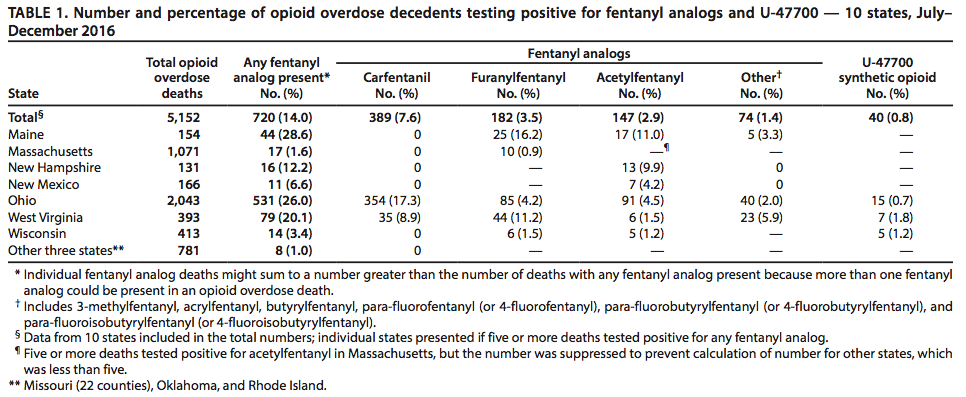More Than Half Of Opioid Overdose Deaths Now Involve Synthetic Drugs Like Fentanyl Image courtesy of Jason Burrows
If you’ve had any doubt that America is in the throes of an opioid epidemic, perhaps a new report from the Centers for Disease Control and Prevention will hit the point home.
According to the agency’s latest Morbidity and Mortality report, more than half the opioid overdose deaths in 10 states involved the synthetic drug fentanyl.
The CDC’s report [PDF] looked at opioid overdose deaths during July–Dec. 2016 that tested positive for fentanyl, fentanyl analogs, or U-47700, an illicit synthetic opioid, in 10 states participating in its Enhanced State Opioid Overdose Surveillance (ESOOS) program. It found that Fentanyl was involved in more than 50% of opioid overdose deaths in those states.
A preliminary estimate by the CDC calculated that U.S. overdose deaths exceeded 60,000 last year, and “were partially driven by a fivefold increase in overdose deaths involving synthetic opioids (excluding methadone).” There were 20,000 overdose deaths linked to opioids in 2016, more than six times the number of deaths (3,105) in this category in 2013.
RELATED: White House Declares Opioid Crisis Is Public Health Emergency. Now What?
And of the opioid overdose deaths involving synthetic opioids and their analogs, over half also tested positive for other illicit drugs like heroin.
“Increasing mixing or co-use of fentanyl, heroin, cocaine, and fentanyl analogs might contribute to increased overdose risk, because users are exposed to drug products that vary substantially in potency, and that include some extremely potent products,” the report notes.
It’s worth noting that almost half overdose deaths involving fentanyl and fentanyl analogs didn’t test positive for other illicit opioids, “suggesting that fentanyl and fentanyl analogs might be emerging as unique illicit products,” says the CDC.
The finding that manufactured fentanyl is now a “major driver of opioid deaths in multiple states”and that its analogs are increasingly showing up as well, raises concern that “in the near future, fentanyl analog overdose deaths might mirror the rapidly rising trajectory of fentanyl overdose deaths that began in 2013 and become a major factor in opioid overdose deaths.”
In light of these numbers, the agency suggests that surveillance for opioid overdoses “needs to expand to track the rapidly changing illicit opioid market.”
To that end, the agency says it expanded ESOOS to 32 states and the District of Columbia in 2017 and added funding for all 33 recipients to improve forensic toxicologic testing of opioid overdose deaths to include capacity to test for a wider range of fentanyl analogs.
Want more consumer news? Visit our parent organization, Consumer Reports, for the latest on scams, recalls, and other consumer issues.


